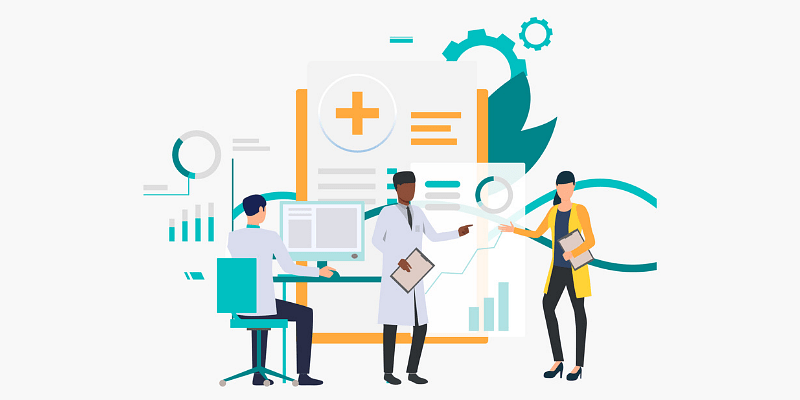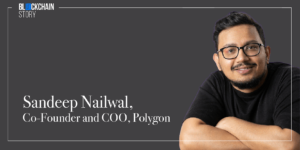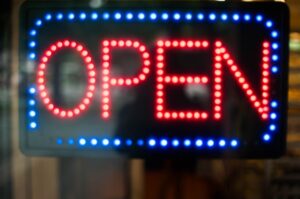Remdesivir. Plasma. Oxygen cylinders. ICU beds. Indian social media platforms were full of cries for help during the second wave of the COVID-19 pandemic. Add to it the horrifying news of many succumbing due to the shortage of key COVID-19 treatments.
We have all wondered if we could have done anything differently. The distress calls on social media have left behind cues for demand planning. Can we use this data to bridge the last-mile treatment delivery gap? Yes, we can.
Technology can enable us to design brand new strategies that reduce the burden on kind strangers on social media. What we need is a technology-powered policy to build resilient and agile healthcare system. This is critical with the third wave of the pandemic on the anvil.
Barriers to building data-driven healthcare system
Healthcare in India continues to be largely unstructured. There are barriers in predicting and delivering medicines, treatments, and vaccines on demand. Add to this the challenge of data sharing. A considerable part of the population visits private hospitals, and this data is not available for larger policy decisions. All these challenges came to the fore in full glory during the second wave of the COVID-19 pandemic in India.
When facing shortage or lack of facilities and medicines, many turned to their friends, acquaintances, and celebrities for help. Social media is replete with cues, real data on actual demand, and delivery gap in health services. Can this data be used to create a long-term policy for last-mile fulfilment? The answer, fortunately, is a resounding yes.
Social listening can play a significant role
We need more beds and instruments, and these needs are being fulfilled as we speak. Simultaneously, a strong data and technology infrastructure must inform these decisions. Where did the most ICU bed requests come from? Which demographics needed oxygen cylinders the most? Was it Tier-I cities or Tier-II towns where bed availability was at its lowest?
Technologies like data analytics and social listening rise to the occasion. Empowered with data, government would have the ability to forecast the demand for medicines and treatment facilities and make policy decisions for the larger good.
And this can be the starting point in preparation for the third wave. More importantly, data-driven fortification of healthcare systems would have an impact on the last-mile healthcare delivery in the long haul.
From our experience in building social listening and healthcare demand forecasting tool at scale, there are three areas where we need to be vigilant –
1. Ensuring our listening is deep and intent
Selecting the right listening platforms is key. We should be choosing platforms that cover the majority of posts generated across each area – vaccines, medication, and oxygen cylinders among others. Posts should also be filtered to remove forwards and re-posts, so we have accurate numbers at hand.
It is also critical that the listening strategy identifies and removes fraudulent messages. Through advance Computer Vision and NLP technologies such as Transformer models and Language Understanding Techniques, we can take into account all genuine messages, whether they are text, image, or video.
2. Taking accurate and precise action
Once the data is filtered and accurate information is extracted from the data pool, it can act as a navigational compass to procure, provision, and deliver.
Governments and healthcare systems will be empowered with insights on the unfulfilled treatments and medicines and the location for the same. The demand would then be intelligently processed for quick and proactive action.
3. Monitoring the data flow to ensure near-perfect results
Numbers are key – the data must forecast the exact and specific requirements for treatment facilities. Some social media posts were for a single patient while some were for multiple patients. Such information must be gleaned from millions of posts in order to build a continuously updating database.
Moreover, the location of the post may not always be synonymous with the location of demand. For example, a bed requirement in Bhilai could be posted on the Instagram handle of a celebrity in Mumbai. Similar requests could also be posted by many handles. Instances like these must be closely observed and analysed to build a truly functional and agile data foundation.
In the next step, available data can be used to forecast and extract the patient detail like location, hospital name to arrange the delivery of required support like oxygen cylinder, beds, medications, etc. Eventually, you can monitor the data flow using the dashboard and plan providing the requirements accordingly.
The workflow illustrated below emphasizes the key elements discussed in this blog and the stage-wise process to implement the social listening and healthcare demand forecasting tool.
Armed with these insights, the healthcare systems would get better at demand planning and delivering to the last person in the value chain.
The time is now
We have been speaking of using data for good for years now. The time to see it in action is well and truly here. For once, all the buzz on social media can be filtered to save lives.
In the process, we will create the much-needed data-driven healthcare system not only for dealing with the immediate crisis, but also to be able to react promptly to future healthcare needs of the public.
The time to act is now. Technology leaders can partner with the government to fortify our healthcare infrastructure for good. We must leverage data left behind by the storm of the second wave to save lives in the third. That is the brightest way forward.
(Disclaimer: The views and opinions expressed in this article are those of the author and do not necessarily reflect the views of YS.)










